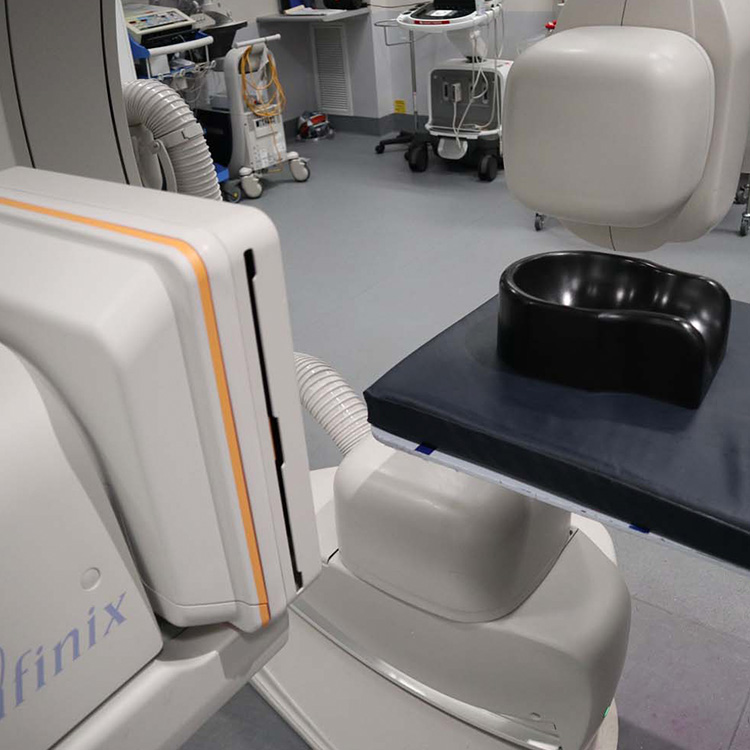Vertebroplasty is a minimally invasive procedure to treat compression fractures of the spine.
Due to medical conditions such as osteoporosis the vertebrae bodies in the spine can become weak and prone to compression fractures, which result in pain and loss of vertebral body height. One option for management of this condition involves injecting a plastic cement like material called polymethylmethacrylate (PMMA) into the vertebral body. The PMMA solidifies within the bone acting as an internal support which stabilises the fractured bone segments helping to decrease pain from the fracture. The cement also protects against further compression and loss of height of the vertebra.
The procedure is often performed under awake sedation, however patients can be put to sleep if they would prefer. Under Xray guidance needles are placed through the skin and guided into the correct position in the vertebra. The PMMA cement is then injected. Imaging is performed at the same time as the injection of cement to ensure that the cement fills the desired location.
The procedure is performed as a day case meaning that you do not need to stay in hospital overnight. Following the procedure you will need to stay lying flat in bed for 4 hours. Following this period of recovery, you can go home without any significant restrictions or need for bracing.
Studies suggest that complications from vertebroplasty are rare (less than 5% of cases). Complications include:
- Cement leakage (often asymptomatic). Cement can leak into the epidural space, around nerves, intervertebral disc and paravertebral tissues (including the para-spinal venous plexus). PMMA leakage into the epidural space is the most concerning complication as this can result in compression of the spinal cord which can require surgical decompression. Leakage of PMMA cement into veins may rarely result in pulmonary embolism.
- Infection
- Fracture of ribs or pedicles
In Australia indications to perform this procedure currently include severe back pain usually less than 3 weeks since onset, the pain is poorly controlled with pain relieving medications and an MRI (or special CT scan) clearly demonstrate an acute fracture of the vertebra.

